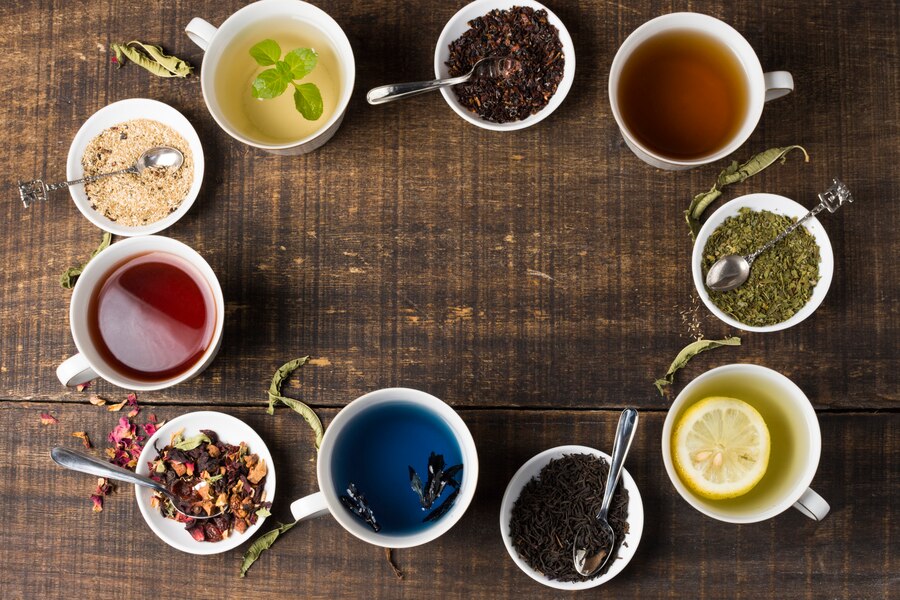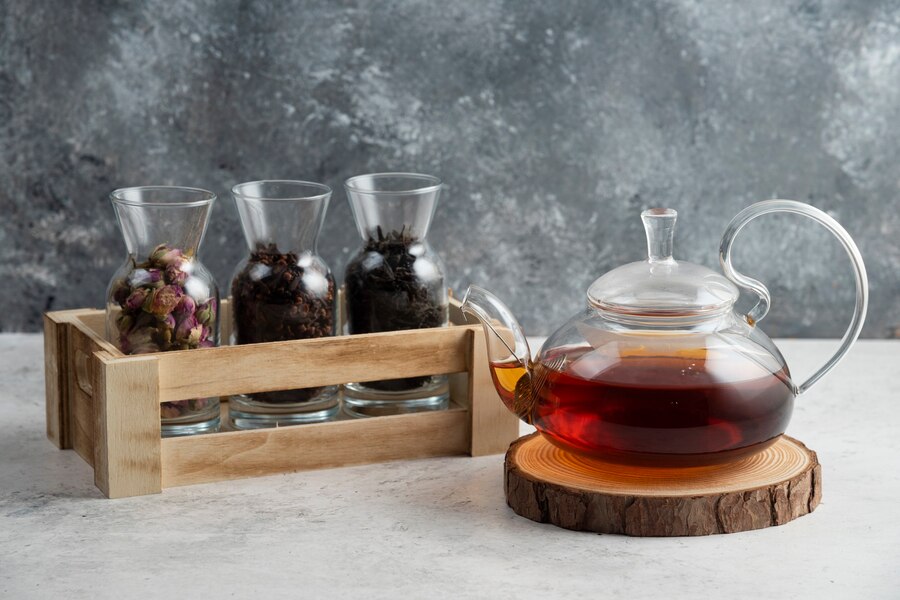Exploring the World of Teas: A Guide to Different Varieties
Tea is one of the most popular beverages globally, cherished for its flavor, cultural significance, and health benefits. With so many types of tea available, each offering a unique experience, it’s worth exploring the diverse world of this aromatic drink. Let’s dive into the most common varieties of tea and what makes each one special.

1. Green Tea: The Wellness Elixir
Green tea is made from unoxidized leaves, preserving their natural antioxidants and nutrients. Known for its refreshing, grassy flavor, this tea is a staple in many cultures, particularly in China and Japan.
- Flavor Profile: Light, fresh, and sometimes slightly sweet or vegetal.
- Health Benefits: Boosts metabolism, aids in weight management, supports brain health, and is rich in antioxidants like catechins.
- Popular Varieties:
- Sencha: A Japanese favorite with a clean, grassy taste.
- Dragon Well (Longjing): A Chinese classic with nutty and sweet notes.
Green tea is perfect for those who want a light, healthy option with subtle flavors.
2. Black Tea: Bold and Energizing
Black tea undergoes full oxidation, giving it a darker color and robust flavor. It’s one of the most widely consumed teas, often enjoyed with milk and sugar or as a base for popular blends like chai.
- Flavor Profile: Strong, malty, and rich with varying undertones.
- Health Benefits: Enhances heart health, boosts energy, and may improve gut health.
- Famous Types:
- Assam: Known for its malty flavor, grown in India’s Assam region.
- Darjeeling: A delicate, floral tea often called the “Champagne of Teas.”
- Nilgiri: From South India’s Nilgiri hills, offering a robust and aromatic experience.
You should choose black tea if you want a strong cup of tea with caffeine.
3. Oolong Tea: The Perfect Balance
Oolong tea falls between green and black tea in terms of oxidation, offering a complex range of flavors. It’s often described as floral, fruity, or even creamy, making it a versatile choice.
- Flavor Profile: Varies from light and floral to dark and roasted.
- Health Benefits: Aids digestion, promotes weight management, and supports heart health.
- Famous Varieties:
- Tieguanyin (Iron Goddess of Mercy): A floral Chinese oolong.
- Milk Oolong: Known for its creamy, buttery taste.
Oolong tea is ideal for those who want to explore a wide flavor spectrum in one category.
4. White Tea: The Purest Form
A white tea is made from young leaves or buds and is the least processed of all teas. Its delicate nature makes it a rare and luxurious choice.
- Flavor Profile: Light, sweet, and subtly floral.
- Health Benefits: Promotes skin health, boosts immunity, and fights free radicals.
- Popular Varieties:
- Silver Needle: Made from tea buds, prized for its subtle sweetness.
- White Peony: Slightly stronger with floral and fruity notes.
If you love subtle flavors, white tea offers a sophisticated experience.
5. Herbal Tea (Tisanes): Nature’s Infusion
Herbal teas are made from herbs, flowers, spices, and fruits, so technically they aren’t tea. They’re caffeine-free and widely appreciated for their therapeutic properties.
- Popular Blends:
- Chamomile: Known for its calming effects, perfect for bedtime.
- Peppermint: Refreshing and great for digestion.
- Hibiscus: Tart and vibrant, packed with antioxidants.
- Health Benefits: Relieves stress, aids digestion, and provides hydration.
Herbal teas are perfect for those seeking caffeine-free, soothing options.
6. Matcha: The Superfood Powder
Matcha is a type of green tea made from shade-grown leaves that are stone-ground into a fine powder. It’s whisked into hot water or milk for a creamy, frothy drink.
- Flavor Profile: Rich, earthy, and umami.
- Health Benefits: Packed with antioxidants, boosts energy, and enhances focus.
- Uses: Traditionally used in Japanese tea ceremonies, but also popular in lattes, desserts, and smoothies.
Matcha is a versatile option for health enthusiasts who enjoy bold flavors.
7. Pu-erh Tea: The Aged Wonder
Pu-erh tea is a fermented tea, known for its complex, earthy flavors. It is often aged, and like fine wine, improves with time.
- Flavor Profile: Deep, rich, and earthy.
- Health Benefits: Supports digestion, aids in weight loss, and detoxifies the body.
- Popular Use: Traditionally consumed after heavy meals in China.
Pu-erh tea is great for those who enjoy bold, unique flavors with digestive benefits.
8. Yellow Tea: A Rare Treat
Yellow tea is a rare and luxurious type, similar to green tea but processed more slowly to remove grassy notes.
- Flavor Profile: Sweet, smooth, and mellow.
- Health Benefits: High in antioxidants and promotes mental clarity.
Yellow tea is perfect for those who want to explore something rare and refined.
Choosing the Right Tea for You
Each type of tea has its unique flavor profile, aroma, and benefits. Whether you’re drawn to the earthy tones of Pu-erh, the grassy notes of green tea, or the robust flavors of black tea, there’s a tea for every palate and occasion.
At Wayanady, we bring you the finest teas, including premium green tea and Nilgiri tea powder, sourced from the lush hills of India. Our teas are crafted to deliver not only exceptional taste but also unmatched freshness and quality. Visit wayanady.com or shop on Amazon and Flipkart to explore our collection.
Final Thoughts
The world of tea is vast and fascinating, offering a drink for every mood, occasion, and preference. So, which type of tea will you try next? Brew a cup and discover the magic behind each sip!

